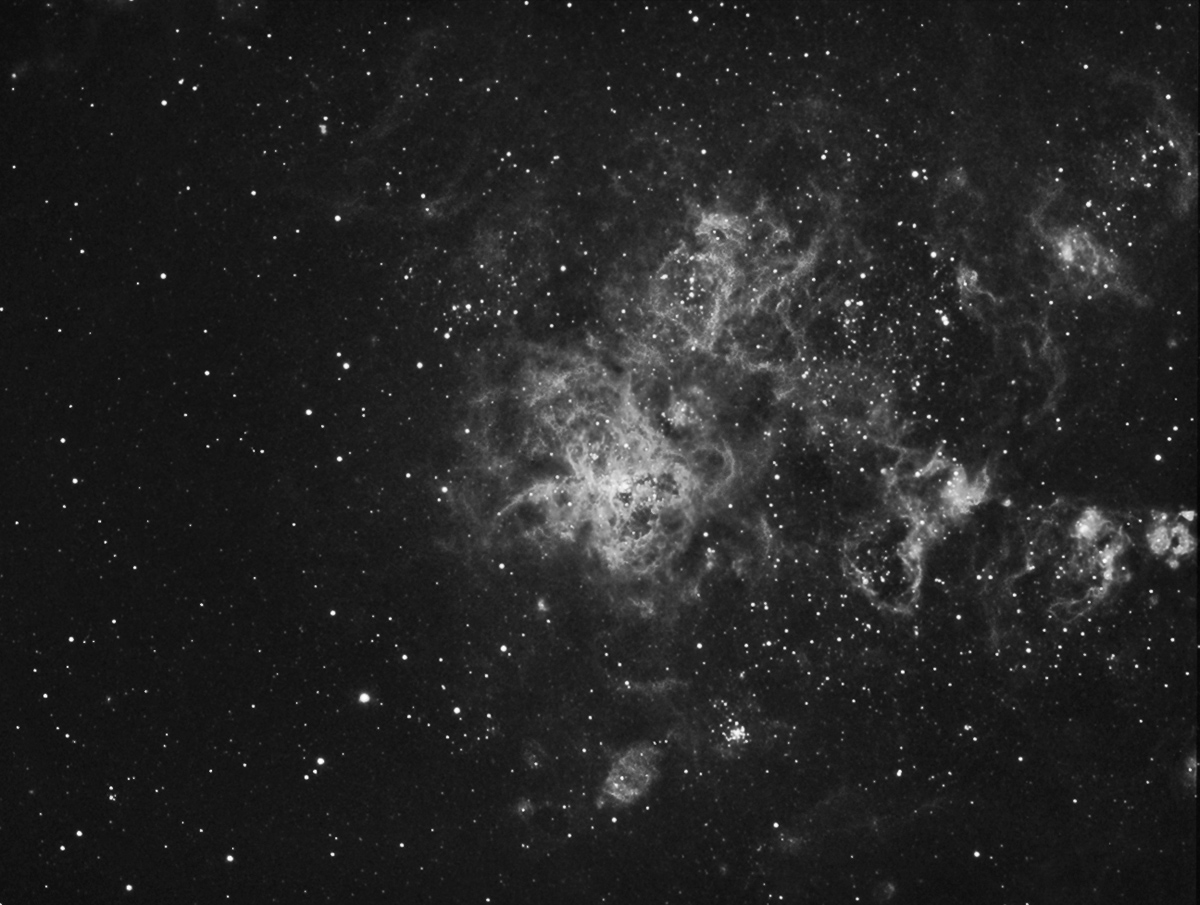
| HOME |
NGC 2070 – TARANTULA NEBULA IN Ha Light
Dorado
Object Centered at
(ra: 5:38,6 / dec -69:05)

DATA
TYPE: HII Region in LMC
VISUAL MAGNITUDE for NGC 2070: 5
SIZE: 40 arc minutes
DISTANCE: 179,000 light years
OBJECT DESCRIPTION
NGC 2070 was first catalogued as a star: 30 Doradus. It was recognized as a nebula by Abbe Lacaille on 1751.
The Tarantula Nebula region is one of the largest skies emission nebula. An easy target for southern stargazers, even with the unaided eye in darks nights. NGC 2070 is the nearest extragalactic HII zone and the larger in our local group, spreading an area of 3000 lights years. The nebula is illuminated by a young and hot star cluster located in the center, covering a region of no more than a light year.
In 1987 in the east side of the nebula a supernova exploded. The 1987A supernova was the first visible one after 1604.
The night was very clear but with full moon. I was able to see all the equipment. Flash light was almost not necessary but the Astronomik 6nm Ha filter did a nice job.
IMAGE INFORMATION
SCOPE: William Optics ZenithStar 66, WO 0.8 Compressor riding in a LXD 75 Mount
SKY CONDITIONS: Visual limit magnitude 4, Full Moon and windy night
CAMERA: Starlight Xpress SXVF H9 @f 4.8
FILTERS: Astronomik Ha, Type II, Atik Filter Wheel
IMAGE ACQUISITION: AstroArt 3.0, CCD Control Interface 3.72
EXPOSURES: LHa (15,30)
PROCESSED: Calibrated (no darks, no flats, no offsets) in ImagesPlus. CCD Sharp, Photoshop CS